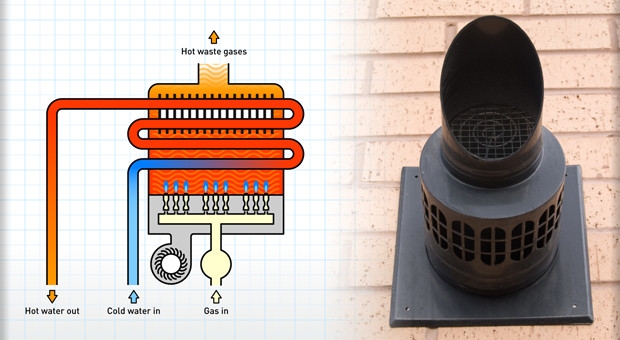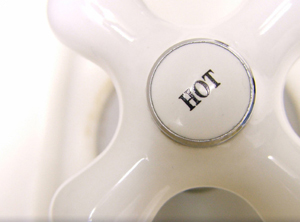Single heat exchanger technology is utilised to transfer energy from combustion to the water being heated.
What is the technology behind non-condensing heating systems?
Non-condensing water heaters are available in an array of technologies from instantaneous to direct storage. Non-condensing water heating technologies typically employ simple heating technology although high tech continuous flow variants are available. Non-condensing technologies have a lower efficiency rating and are therefore targeted to be phased out, within upgrades of the building regulations and various government driven initiatives.
How do non-condensing water heaters work?
The normal method of producing heat energy to raise the temperature of water involves burning the hydrogen content of a fossil fuel, such as gas. When this happens, hot gases are released as a by-product. This latent heat in a non-condensing system is pushed out as exhaust gas and lost as wasted energy.
What are the disadvantages or limitations of this technology?
The steam released from a non-condensing boiler contains heat energy which took fuel to create. So, expelling it as exhaust is wasteful. And the hotter the steam, the less energy is used to heat the water, so efficiency is compromised.
- Non-compliant to building regulations
- Lower efficiencies
- Targeted for phase out by national government
- Greater carbon footprint than condensing technologies

